
Sexual and reproductive health is not just about physical well-being; it’s about dignity, autonomy, and the right to shape one’s future. Yet, for many adolescent girls in Nepal, deeply entrenched social norms continue to place heavy limitations on these rights, leaving them vulnerable to health risks, social isolation, and lifelong inequality.
In Nepal, the journey from girlhood to womanhood is often dictated by cultural expectations that prioritise marriage and motherhood over education and personal growth.
Despite legal frameworks designed to prevent child marriage, the pressure for young girls to conform to traditional roles remains present. Approximately 21% of girls aged 15–19 are married or in a union, compared to just 5% of boys.1 This disparity highlights the belief that a girl’s value is tied to her fertility and her ability to conform to societal expectations, often at the cost of her health, education, and future.
The invisible chains of social norms
Due to financial burden, poverty and a lack of awareness on access to health and its importance, many don't seek help."Ward chairperson of Rautahat District
For many adolescent girls, these expectations result in early marriages, early pregnancies, and exposure to a range of health complications. Girls face pressure not only to marry young but also to prove their fertility soon after marriage. This leads to early pregnancies — many without proper healthcare supervision — putting both mothers and their newborns at risk.
These early life transitions strip girls of their childhood, forcing them into roles of wives and mothers before they’re physically, emotionally, or mentally prepared. The consequences ripple far beyond individual households. They limit girls' opportunities for education, restrict economic participation, and perpetuate cycles of poverty and inequality.
A closer look: Voices from the field
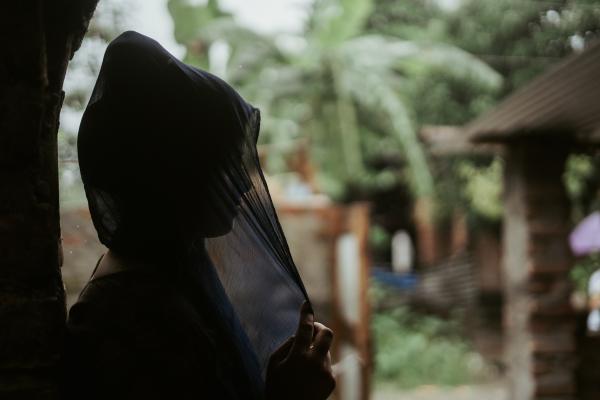
In March 2024, a qualitative study was conducted across the Bara, Rautahat, and Surkhet districts to explore how social norms impact adolescent girls’ sexual and reproductive health. Using the Social Norms Analysis Plot (SNAP) Tool, the study captured the voices of marginalised girls, women, community leaders, health workers, and peer networks.
Through in-depth interviews and focus group discussions, the research revealed a complex web of beliefs and practices that reinforce harmful traditions.
The findings were sobering
Despite few positive developments, harmful social norms still limit access to health services in several regions:
Menstrual restrictions
In places like Surkhet, traditional practices restrict girls from visiting health facilities during menstruation, often leading them to seek help from traditional healers instead. In Madesh province, while menstrual restrictions are less common, some girls and women still feel uncomfortable seeking services during their periods.
Family control over mobility
Newly married daughters-in-law in many communities are not allowed to visit health facilities alone and need a male family member to accompany them.
Cultural barriers in minority communities
In regions like Rautahat and Bara, Muslim girls and women face additional barriers in accessing health services, including family planning, due to cultural norms.
These restrictions are further compounded by societal taboos and deeply ingrained stigmas surrounding menstruation, reproductive health, and family planning.
The weight of stigma and taboos
Menstrual and reproductive health taboos
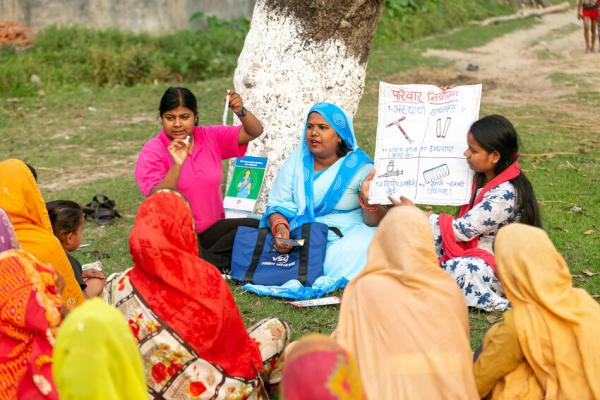
Deep-seated cultural taboos continue to hinder girls' and women’s access to healthcare. Practices such as staying indoors during menstruation and avoiding kitchens contribute to health risks and prevent timely medical care.
Shyness and shame
Feelings of embarrassment, especially when male health workers are present, discourage many adolescent girls and women from seeking care for menstruation or reproductive health concerns.
Religious beliefs and family planning
In some religious communities, family planning is perceived as sinful, leading to hesitancy in using contraceptive methods.
Gender discrimination
Preferences for sons over daughters perpetuate gender inequality, further limiting adolescent girls' and women’s access to health services.
Social norms surrounding mobility, traditional practices, and gender inequality significantly hinder adolescent girls' and women's access to healthcare in Nepal.
In rural and conservative communities, particularly in Madhesh Province, cultural expectations restrict girls' and women's independence. While women in Karnali Province enjoy relatively more mobility and decision-making power, the societal norms in Madhesh present significant barriers.
Additionally, the reliance on traditional healers, especially in Surkhet, often results in fatal delays in accessing medical care.
The long-term effects of child marriage
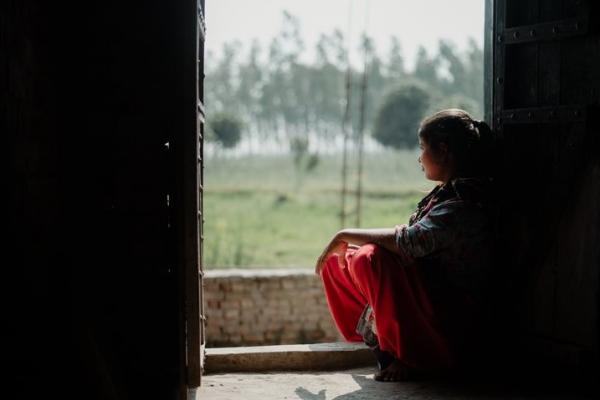
Health risks
Early pregnancies increase the risks of obstructed labour, hemorrhage, maternal and infant mortality, and reproductive health issues.
Limited educational opportunities
Early marriage disrupts education, forcing girls to drop out and take on household responsibilities. Early pregnancies further limit their chances of continuing education and career development.
Economic dependence
Restricted access to education and skills results in limited employment opportunities, leading to financial dependency on spouses or families.
Gender inequality and discrimination
Some adolescent girls who marry early suffer from mental health issues as they cannot adapt to their new responsibilities and the pressure put on them."VSO youth champion
Early marriage reinforces traditional gender roles, limits girls’ decision-making power, and increases vulnerability to domestic violence, dowry-related abuse, and systemic gender-based discrimination.
Social isolation and stigma
Married girls may face exclusion from social networks and community support, especially if the marriage is socially disapproved or if they struggle to integrate into their in-laws' families.
Moving towards empowerment by transforming social norms
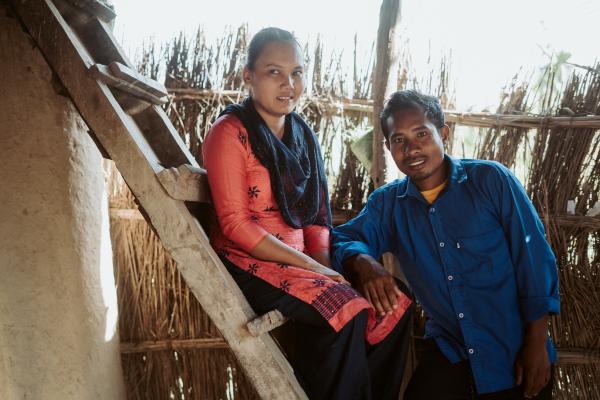
There is hope on the horizon, as efforts to challenge harmful social norms are yielding positive outcomes. Equitable norms and greater gender equality are contributing to improved health outcomes and empowering women and girls across Nepal.
Access to health services
Increased awareness of health services, preventive measures, and sexual and reproductive health rights is making a significant difference in communities.
Improved health-seeking behaviour
Women and girls now prioritise preventive care, family planning, and timely healthcare, showing a shift toward healthier choices.
Enhanced decision-making power
Women and girls are becoming more active participants in health-related decisions, within households and communities. Families are increasingly encouraging adolescent girls to seek healthcare and openly discuss health concerns.
Reduction in gender-based barriers
The gradual reduction in cultural norms and discriminatory practices has made healthcare more accessible to women and girls, regardless of their background.
Programme innovations: What works?

Several programs have been instrumental in addressing these issues:
- Community engagement and awareness: Campaigns that raise awareness about child marriage and health services are crucial. Engaging religious leaders, elders, and parents helps challenge harmful social norms.
- Promoting gender equality and empowerment: Initiatives that provide education, vocational training, and economic opportunities for girls help reduce their vulnerability to early marriage and enable them to make informed decisions about their lives and health.
- Healthcare interventions: Expanding access to reproductive, maternal, child, and mental health services is essential. Training healthcare providers to offer gender-sensitive, confidential, and youth-friendly care is equally important.
- Multi-sectoral collaboration: Strengthening coordination among government, NGOs, schools, and local stakeholders ensures a holistic approach to tackling child marriage and improving health services access.
- Engaging men and boys: Encouraging men and boys to support gender equality, girls' education, and women's rights fosters a more inclusive and supportive environment.
- Monitoring progress: Monitoring systems that involve communities in tracking progress help ensure that interventions are working effectively and that gaps are addressed.
While Nepal has made significant strides in improving healthcare access and reducing child marriage through government, NGO, and grassroots efforts, challenges remain. The role of social norms in shaping gender inequality cannot be underestimated.
To overcome these barriers, sustained efforts are needed, particularly through continued collaboration, community engagement, and investments in healthcare and education.
Through these initiatives, we can create a future where all girls are empowered to make choices about their health, education, and life, free from the constraints of harmful social norms.
Read more
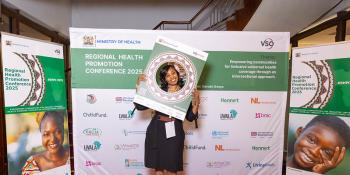
In photos: Our Regional Health Promotion Conference 2025
Check out some of our favourite photos from Regional Health Promotion Conference (RHPC25). This event sought to reimagine Universal Health Coverage through the lens of intersectionality.
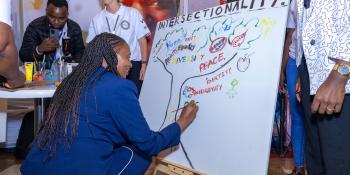
Using intersectionality to create healthy beginnings and hopeful futures
World Health Day brings global attention to the urgent need to end preventable maternal and newborn deaths. Learn more about how our Regional Health Promotion Conference is tackling these issues head on.
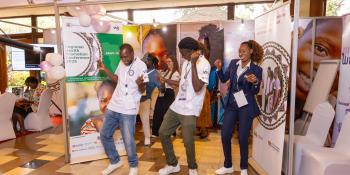
Highlights from the Regional Health Promotion Conference 2025
The Regional Health Promotion Conference 2025 reimagined Universal Health Coverage (UHC) through the lens of intersectionality, by bringing together experts from across East Africa and beyond.
